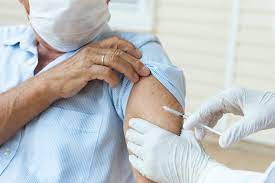Thalassemia
- Arundhati Dey

- May 9, 2022
- 3 min read
What is thalassemia ?
Thalassemia, an inherited ( passed from parents to children through genes) blood disorder caused when the body doesn't make enough of a protein called hemoglobin, an important part of red blood cells.
There are different types of thalassemia, which can be divided into alpha and beta thalassemia. Which again divided into two types. Alpha thalassemia major and minor; same goes for beta as well. Other types include beta thalassemia intermedia, alpha thalassemia major and hemoglobin H disease. But among all these Beta thalassemia major is the most severe type.
Description :
Beta thalassemia is a blood disorder that reduces the production of hemoglobin. Hemoglobin is the iron-containing protein in red blood cells that carries oxygen to cells throughout the body.
In people with beta thalassemia, low levels of hemoglobin lead to a lack of oxygen in many parts of the body (because hemoglobin carries blood oxygen). Affected individuals also have a shortage of red blood cells (anemia), which can cause pale skin, weakness, fatigue, and more serious complications.
Beta thalassemia is classified into two types depending on the severity of symptoms: thalassemia major (also known as Cooley's anemia) and thalassemia intermedia. Of the two types, thalassemia major is more severe.
The signs and symptoms of thalassemia major appear within the first 2 years of life. Children develop life-threatening anemia. Their body fail to gain a healthy weight and grow at the expected rate and may develop pale skin and jaundice. Affected individuals may have an enlarged spleen, liver, and heart, and their bones may be misshapen. Some adolescents with thalassemia major experience delayed puberty. Many people with thalassemia major have such severe symptoms that they need frequent blood transfusions to replenish their red blood cell supply. Over time, an influx of iron-containing hemoglobin from chronic blood transfusions can lead to a buildup of iron in the body, resulting in liver, heart, and hormone problems.
Thalassemia intermedia is milder than thalassemia major. The signs and symptoms of thalassemia intermedia appear in early childhood or later in life. Affected individuals have mild to moderate anemia and may also have slow growth and bone abnormalities.

Frequency:
This type of thalassemia is found in Mediterranean countries, North Africa, the Middle East, India, Central Asia, and Southeast Asia.
Beta thalassemia is currently growing its numbers. It has been estimated that about 1.5% of the global population (80 to 90 million people) are carriers of beta-thalassemia, with about 60,000 symptomatic individuals born annually, the great majority in the developing world.
Causes:
Mutations in the HBB gene cause beta thalassemia. The HBB gene provides instructions for making a protein called beta-globin (which is a component of hemoglobin) Hemoglobin consists of four protein subunits, typically two subunits of beta-globin and two subunits of another protein called alpha-globin Some mutations in the HBB gene prevent the production of any beta-globin. The absence of beta-globin is referred to as beta-zero (β0) thalassemia. Other HBB gene mutations allow some beta-globin to be produced but in reduced amounts. A reduced amount of beta-globin is called beta-plus (β+) thalassemia. Having either β0 or β+ thalassemia does not necessarily predict disease severity, however; people with both types have been diagnosed with thalassemia major and thalassemia intermedia.
A lack of beta-globin leads to a reduced amount of functional hemoglobin. Without sufficient hemoglobin, red blood cells do not develop normally, causing a shortage of mature red blood cells. The low number of mature red blood cells leads to anemia and other associated health problems in people with beta thalassemia.
Thalassemia or any traits of its is dangerous because whoever is affected by it can not live a healthy life like a normal person. Children are the worst victim of it. As a way to protect our society and our youth, we should create awareness about thalassemia as it is caused through genes in a child inherited from his or her parents.



Comments